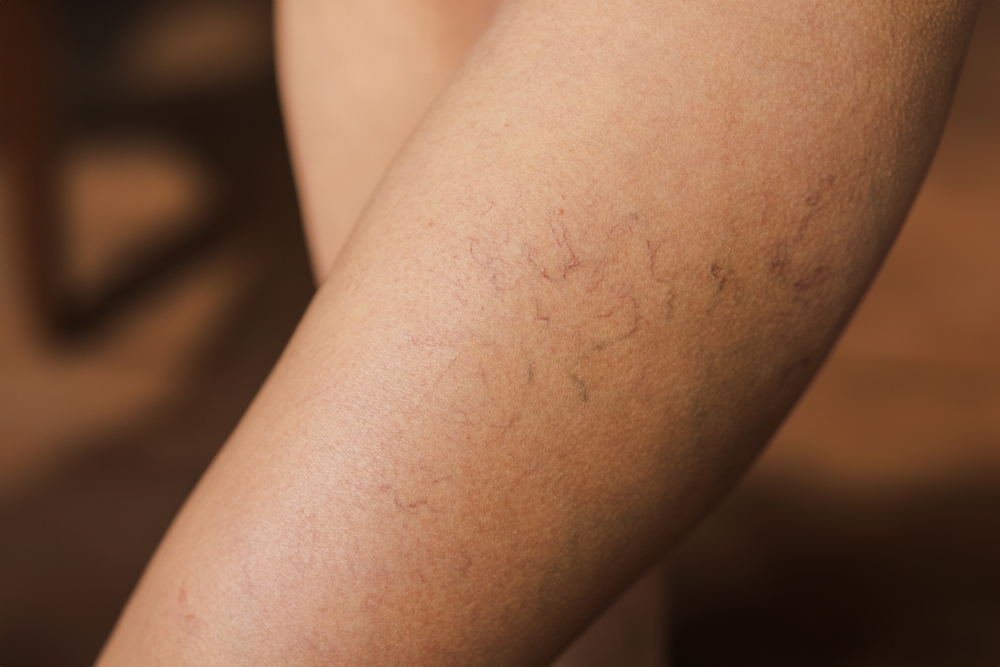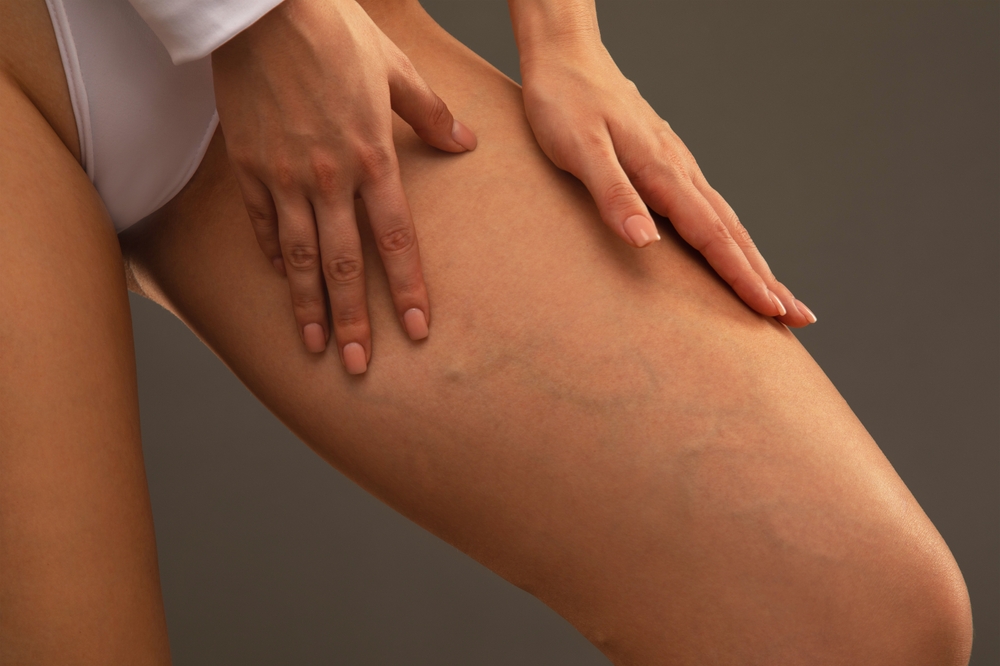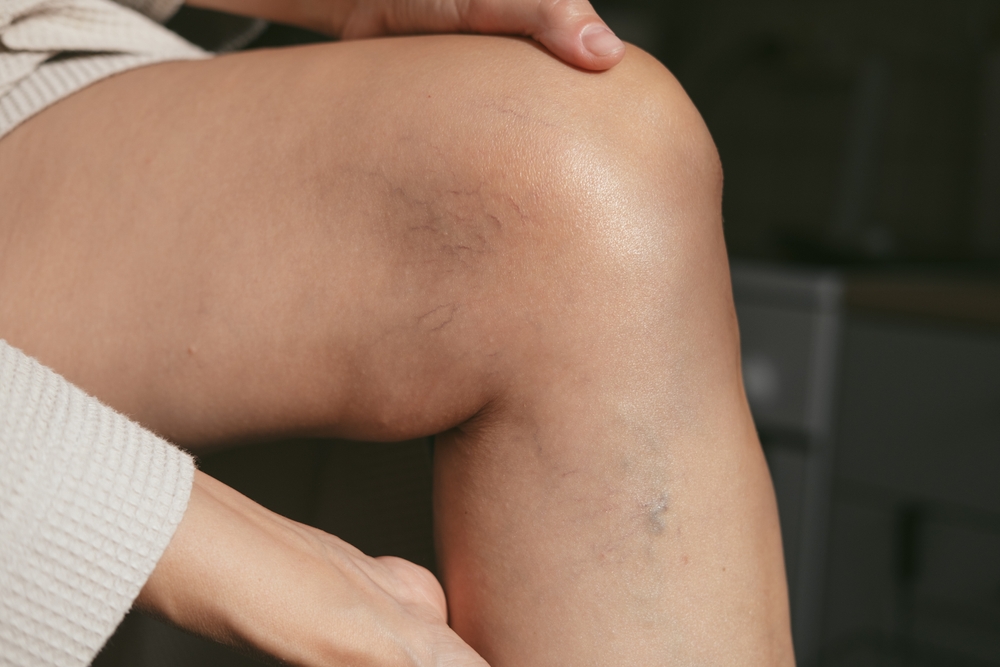Spider veins are a common condition that affects millions of people, yet despite how frequently they appear, there’s still a lot of confusion surrounding them. From old wives’ tales to internet rumors, misinformation about what causes spider veins continues to circulate. Let’s separate myth from medicine so you can make informed decisions about your health.
What are Spider Veins?
Spider veins are small, dilated blood vessels that appear just below the surface of your skin. The reason they are commonly referred to as spider veins is that they commonly resemble a web-like or branching pattern. Spider veins are usually red, blue, or purple and are found on the legs, ankles, and face.
How Spider Veins Differ from Varicose Veins
Although spider veins and varicose veins are both types of enlarged veins, they differ in appearance and severity. Spider veins are smaller, superficial, and below the skin, while varicose veins are larger, twisted, and raised above the surface of the skin. Varicose veins also tend to cause more noticeable symptoms like heaviness and aching.
Common Causes and Risk Factors
Spider veins occur when the small valves inside your veins start to weaken or malfunction. Since the valves aren’t functioning normally, the blood can flow backwards and pool inside the veins, causing them to dilate. Certain risk factors can increase your likelihood of developing spider veins, such as:
- Hormonal changes: Sudden changes in your hormones from pregnancy, birth control, and menopause can affect your veins.
- Genetics: Those with a family history of vein issues are more likely to develop spider veins.
- Prolonged sitting or standing: Occupations or habits that involve long periods in one position can increase the pressure in your veins.
- Age: Veins naturally weaken as you get older and lose their elasticity.
- Sun exposure: UV rays can weaken your skin and damage your blood vessels near the surface of your skin.
- Obesity: Extra weight can put additional pressure on the veins throughout your body, especially the veins in your legs.

Symptoms and Complications
Most of the time, spider veins are painless and not a major threat to your health. Although they’re often dismissed as cosmetic, some individuals may experience symptoms like:
- Achiness or fatigue in your legs
- Swelling or heaviness after long periods of standing
- A mild burning or itching sensation
Although complications are rare, spider veins can lead to more serious conditions such as varicose veins or chronic venous insufficiency.
Common Spider Vein Myths: Debunked

Myth 1: Spider Veins are Purely Cosmetic
Just because spider veins are small does not mean they are only a cosmetic issue. Depending on your medical history, spider veins can signal underlying issues with your vein health. Spider veins can act as a visible sign of venous insufficiency, which occurs when blood cannot flow through your veins correctly. If you have spider veins and also experience symptoms such as aching, swelling, or leg fatigue, talk to your doctor about evaluating your vein health.
Myth 2: Older Adults Get Spider Veins
Age does increase your risk of developing varicose veins, but it doesn’t mean you have to be older for them to develop. You can develop spider veins as early as your 20s and 30s. Hormonal shifts and genetics are the most common reasons for developing spider veins earlier in life.
Myth 3: Crossing Your Legs Causes Spider Veins
Crossing your legs has not been shown to cause spider veins because it does not create enough pressure in the veins to cause damage. Spider veins are usually caused as a result of weakened vein valves, increased pressure in the veins, and sitting or standing for long periods of time. Cross your legs as much as you like when you’re sitting, just make sure to stand up and move around regularly.
Myth 4: Spider Veins are Only a Woman’s Issue
Men can also develop spider veins, although they are often less likely to seek treatment. Women do develop spider veins more often due to hormonal changes and pregnancy. At the Vein Centre, we treat patients of all genders and encourage anyone experiencing vein concerns to seek care.
Myth 5: Exercise Causes Spider Veins
This myth is the exact opposite of the truth. Exercise is an essential part of keeping your veins healthy, as it helps boost your circulation and helps prevent blood from pooling in your legs. Make sure to talk to your doctor about how to create a balanced workout routine that helps improve your vein health, as performing some exercises with improper technique can put additional stress on your veins.
Myth 6: There’s no Effective Treatment for Spider Veins
Treating spider veins is easier than you think. Modern treatment options like sclerotherapy and laser therapy make it easy for you to get safe, minimally invasive treatment that has little downtime. Make sure to talk to your doctor about which approach will be best for you.
When to See a Vein Specialist

Spider veins can be a sign of underlying vein disease, so it is important to understand when it is time to see a vein specialist. You might be tempted to dismiss your spider veins as a cosmetic concern, but you should schedule a consultation to ensure it’s not a sign of a deeper issue. Here’s what you should look for:
- Your Spider Veins are Accompanied by Symptoms: If you have spider veins along with the symptoms previously listed, it can point to deeper venous insufficiency that you should see a doctor for.
- Your Veins are Worsening or Spreading: If you notice more spider veins appearing or existing ones getting worse, you should see your doctor to evaluate the pressure in your veins.
- You’re Self-Consious or Avoiding Activities: Treating your spider veins can help you feel confident to wear any clothing and participate in any activity.
- You Have a Family History of Vein Disease: Your genes can impact if you develop spider veins and how severe they become, making preventative care a higher priority.
- Over-the-Counter Remedies Aren’t Helping: If you’ve tried compression stockings, leg elevation, and topical creams without improvement, it’s time to talk to a specialist to determine a new course of treatment.
Don’t wait until your discomfort worsens or your veins become more visible. If you’re experiencing symptoms or simply want peace of mind, seeing a vein specialist is a smart and proactive step.
How the Vein Centre Can Help
The Vein Centre can help you assess your vein health and treat your spider veins. We specialize in minimally invasive procedures such as:
- Sclerotherapy: A solution is injected into the spider veins to force them to collapse and fade over time.
- Laser Therapy: Targeted light energy is used to heat and destroy small, superficial spider veins when they do not respond to sclerotherapy.
In addition to these treatment options, The Vein Centre ensures you have the knowledge to prevent spider veins, improve your vein health, and manage your habits. If you’ve been misled by spider vein myths or have put off treatment, our doctors at the Vein Centre can help you look and feel better.
If you’re in need of a vein consultation, then connect with one of our skilled providers at the Vein Centre today! We treat a variety of vein conditions, from varicose veins to peripheral artery disease. Contact us today to learn more about treatment options to get your legs summer-ready! We look forward to hearing from you.



